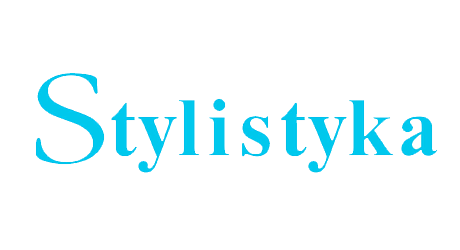Źródła
Google Scholar
AHM – Archiwum Historii Mówionej Muzeum Powstania Warszawskiego, https://www.1944.pl/archiwum-historii-mowionej.html (dostęp: maj–wrzesień 2022).
Google Scholar
JPW – Wolińska O., 1996, Język polski w walce. – Język polski czasu drugiej wojny światowej (1939–1945), red. I. Bajerowa, Warszawa: Energeia, s. 337–388.
Google Scholar
Literatura
Google Scholar
Artwińska A., Fidelis M., Mrozik A., Zawadzka A., 2016, Pożytki z „pokolenia”. Dyskusja o „pokoleniu” jako kategorii analitycznej, „Teksty Drugie”, 1, s. 347–366.
Google Scholar
Bohn A., Berntsen D., 2011, The Reminiscence Bump Reconsidered: Children’s Prospective Life Stories Show a Bump in Young Adulthood, “Psychological Science”, 22(2), s. 197–202, https://doi.org/10.1177/0956797610395394.
Google Scholar
Chlebda W., 2005, Szkice o skrzydlatych słowach. Interpretacje lingwistyczne, Opole: Wydawnictwo Uniwersytetu Opolskiego.
Google Scholar
Chlebda W., 2019, O wyzwaniach i zadaniach pamięcioznawstwa lingwistycznego, „LingVaria”, 2(28), s. 147–164, https://doi.org/10.12797/LV.14.2019.28.10.
Google Scholar
Draaisma D., 2006, Dlaczego życie płynie szybciej, gdy się starzejemy. O pamięci autobiograficznej, przeł. E. Jusewicz-Kalter, Warszawa: Państwowy Instytut Wydawniczy.
Google Scholar
Draaisma D., 2010, Fabryka nostalgii. O fenomenie pamięci wieku dojrzałego, przeł. E. Jusewicz-Kalter, Wołowiec: Wydawnictwo Czarne.
Google Scholar
Dubisz S., 2015, Kategoria pokolenia w badaniach lingwistycznych. – Dialog pokoleń w języku potocznym, w języku wsi i miasta, w literaturze, w publicystyce, w tekstach kultury, red. E. Wierzbicka-Piotrowska, Warszawa: Wydział Polonistyki Uniwersytetu Warszawskiego, s. 33–40.
Google Scholar
Fromholt P., Mortensen D.B., Torpdahl P., Bender L., Larsen P., Rubin D.C., 2003, Life-Narrative and Word-Cued Autobiographical Memories in Centenarians: Comparisons with 80-Year-Old Control, Depressed, and Dementia Groups, “Memory”, 11(1), s. 81–88, https://doi.org/10.1080/741938171.
Google Scholar
Gajda A., 2015, Wykład, referat, odczyt, pogadanka, gawęda i ich pokrewieństwo gatunkowe. – Gatunki mowy i ich ewolucja, t. 5: Gatunek a granice, red. D. Ostaszewska, J. Przyklenk, Katowice: Wydawnictwo Uniwersytetu Śląskiego, s. 238–245.
Google Scholar
Gajda S., 2001, Stylistyka funkcjonalna, stylistyka pragmatyczna, stylistyka kognitywna… – Stylistyka a pragmatyka, red. B. Witosz, Katowice: Wydawnictwo Uniwersytetu Śląskiego, s. 15–22.
Google Scholar
Janssen S.M., Chessa A.G., Murre J.M., 2005, The Reminiscence Bump in Autobiographical Memory: Effects of Age, Gender, Education, and Culture, “Memory”, 13(6), s. 658–668, https://doi.org/10.1080/09658210444000322.
Google Scholar
Laskowski R., 1999, Kategorie morfologiczne języka polskiego – charakterystyka funkcjonalna. – Gramatyka współczesnego języka polskiego. Morfologia, red. R. Grzegorczykowa, R. Laskowski, H. Wróbel, Warszawa: Wydawnictwo Naukowe PWN, s. 151–224.
Google Scholar
Lewandowska S., 1980, Prasa konspiracyjna w okupowanej Polsce (1939–1945): uwagi i refleksje, „Kwartalnik Historii Prasy Polskiej”, 19/1, s. 49–61.
Google Scholar
Pastuch M., 2018, Pamięć jako pojęcie sterujące badaniem dziejów języka. – Wokół dziejów używania polszczyzny – wspólnoty, potrzeby, zachowania komunikatywne, red. M. Hawrysz, M. Uździcka, Zielona Góra: Oficyna Wydawnicza Uniwersytetu Zielonogórskiego, s. 275–283.
Google Scholar
Poprawa M., 2017, Prasa konspiracyjna w służbie kontrpropagandy – funkcje, cele, zjawiska językowe (na przykładzie gazet podziemnych 1939–1945), „Oblicza komunikacji”, 10, s. 57–98.
Google Scholar
Pułaczewska H., 2021, Adolescence as a “Critical Period” in the Heritage Language Use. Polish in Germany, “Open Linguistics”, 7, s. 301–315, https://doi.org/10.1515/ opli-2021-0019.
Google Scholar
Rubin D.C., Rahhal T.A., Poon L.W., 1998, Things Learned in Early Adulthood Are Remembered Best, “Memory & Cognition”, 26(1), s. 3–19.
Google Scholar
Ruszkowski M., 2015, Kategoria pokolenia w polskich badaniach językoznawczych (stan obecny i perspektywy), “Respectus Philologicus”, 27(32), s. 147–155, https://doi.org/10.15388/RESPECTUS.2015.27.32.14.
Google Scholar
Sławkowa E., 2011, Kierunki badań nad słownictwem pisarzy. – Język pisarzy. Problemy słownictwa, t. 3, red. T. Korpysz, A. Kozłowska, Warszawa: Wydawnictwo Uniwersytetu Kardynała Stefana Wyszyńskiego, s. 13–29.
Google Scholar
Szczerbij N., 2022, Hybrydalne formy czasownikowe w języku polskim i ukraińskim, „Poradnik Językowy”, z. 1, s. 147–163, https://doi.org/10.33896/PorJ.2022.1.8.
Google Scholar
Tomasello M., 2002, Kulturowe źródła ludzkiego poznawania, przeł. J. Rączaszek, Warszawa: Państwowy Instytut Wydawniczy.
Google Scholar
Warchala J., 2019, Formy perswazji, Katowice: Wydawnictwo Uniwersytetu Śląskiego.
Google Scholar
Witosz B., 2005, Genologia lingwistyczna. Zarys problematyki, Katowice: Wydawnictwo Uniwersytetu Śląskiego.
Google Scholar
Witosz B., 2012, Badania nad dyskursem we współczesnym językoznawstwie polonistycznym, „Oblicza komunikacji”, 5, s. 61–76.
Google Scholar
Wyka K., 1977, Pokolenia literackie, Kraków: Wydawnictwo Literackie.
Google Scholar


 https://doi.org/10.25167/Stylistyka34.2024.14%20
https://doi.org/10.25167/Stylistyka34.2024.14%20
